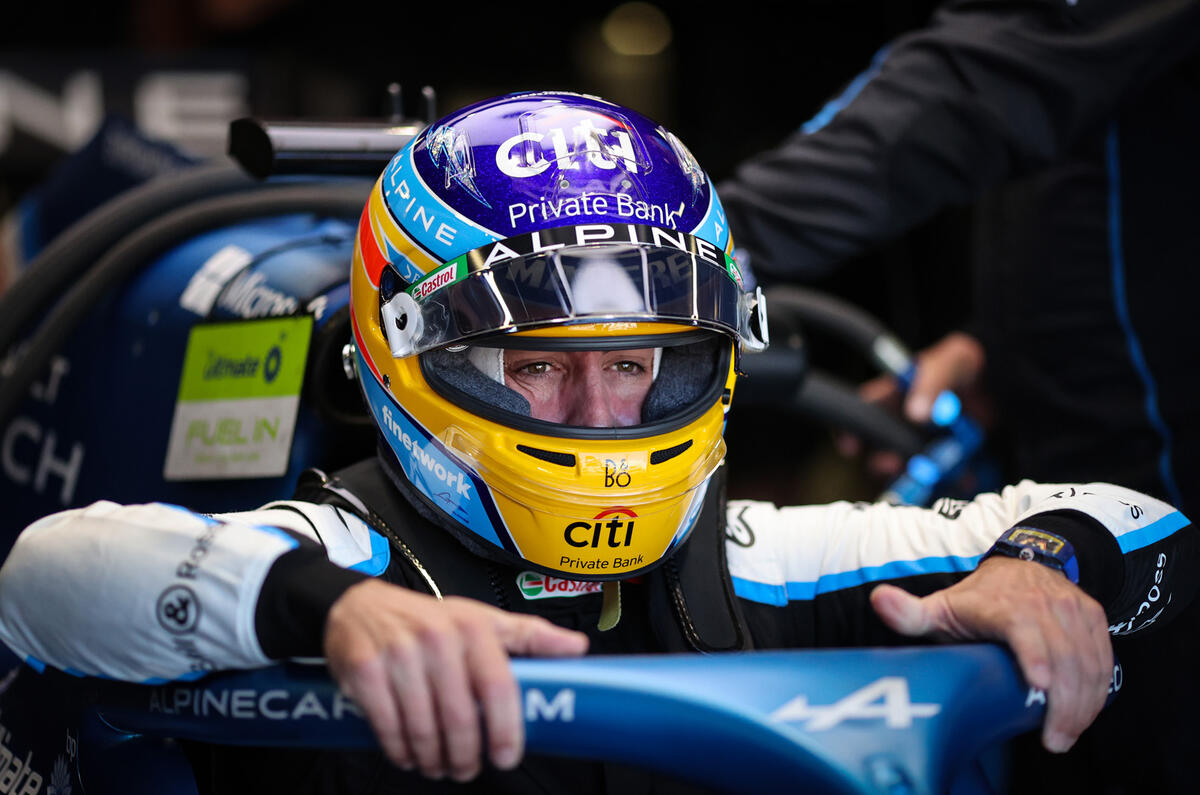Fernando Alonso’s move to Aston Martin for 2023, announced the morning after the Hungarian Grand Prix as Formula 1 breaks up for the summer holiday, has surprised paddock insiders, not least the management at Alpine.
The Renault-owned team appeared ready and more than willing to extend Alonso’s third term at the team for a third consecutive year – but had held off from confirming, which allowed Aston Martin to swoop in hot on the heels of Sebastian Vettel’s retirement announcement last week.
Alonso will be 42 next year, but his new deal is said to be over multiple years, which says much about his drive to push on beyond the usual age boundaries most F1 drivers perform to. The two-time world champion is quite remarkable. This year he has generally outperformed highly rated 25-year-old team-mate Esteban Ocon, even though the Frenchman has outscored him through a better reliability record.
The fact that Alonso remains in demand from two well-funded factory midfield F1 teams says much about the level he is still performing to, 20 years after he made his F1 debut in a Minardi. It might also say something about the lack of obvious world-class talent coming up behind him. Alpine is likely to replace the Spaniard with Australian Oscar Piastri, who has been kicking his heels as reserve driver since winning the Formula 2 title last year. Piastri is highly rated but unproven at the highest level. If he does land the drive, he has big shoes to fill.
But why has Alonso chosen a switch to Aston? In terms of current form, it’s at best a side-step, and that’s being polite. The team formerly known as Racing Point, Force India and, back in the mists of time, Jordan, is flagging in the wake of Alpine and McLaren, which are fighting to be F1’s fourth-best team in the wake of Red Bull, Ferrari and Mercedes-AMG.
The reason must be in the potential Alonso sees in the green team. Lawrence Stroll is famously investing heavily to make Aston Martin a force in F1, with an all-new factory and wind tunnel due to open later this year at Silverstone. He has also been on an aggressive recruitment drive, hand-picking key figures from both Mercedes-AMG and Red Bull. As these recruitments join up following F1’s famously lengthy gardening leaves, they will have an impact on performance – but not yet. It’s too soon. The promise is next year and the years beyond when the level of investment should begin to pay off.
There are no guarantees of results, of course, but that’s the same in any business. And perhaps Alonso lacked faith in what he saw at Enstone-based Alpine, a team he knows intimately from his world title years way back in 2005-06.






Join the debate
Add your comment
Go somewhere and comment on things you like then. It's watched by hundreds of millions around the world.
You seem to lack any eloquence to express your feelings, lack basic human qualities, and come across as an angry oik. Take a look in the mirror and see if you like who you see? Most of your comments are angry, offensive, and confrontational. Behaviour of typical keyboard jockey who is frustrated by his inadequacies. Probably the new name of Takeitslowly who was banned from here.
Two word answer: Money. Ego. (not winning or even competing)
The story of Alpine and Piastri is a Fiasco.